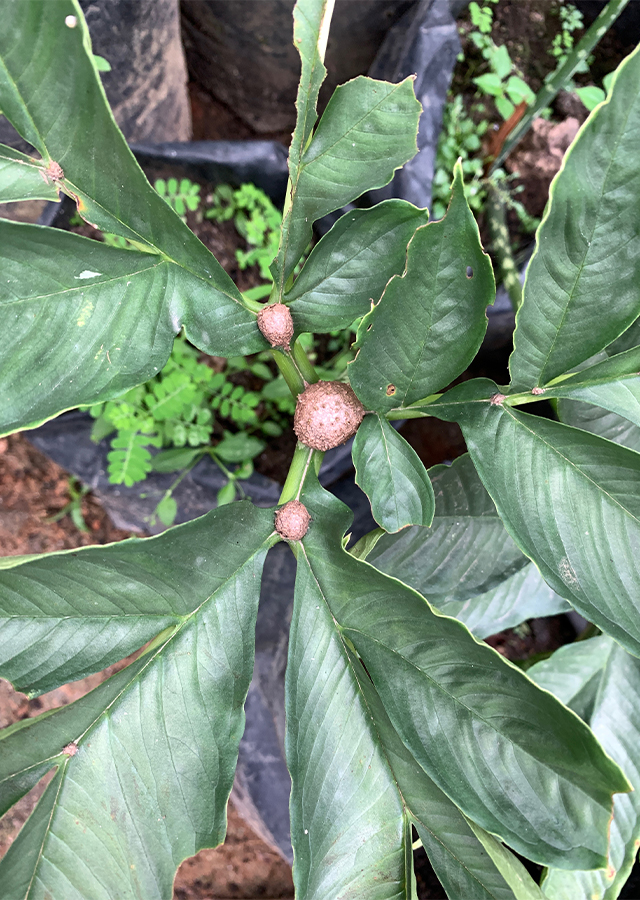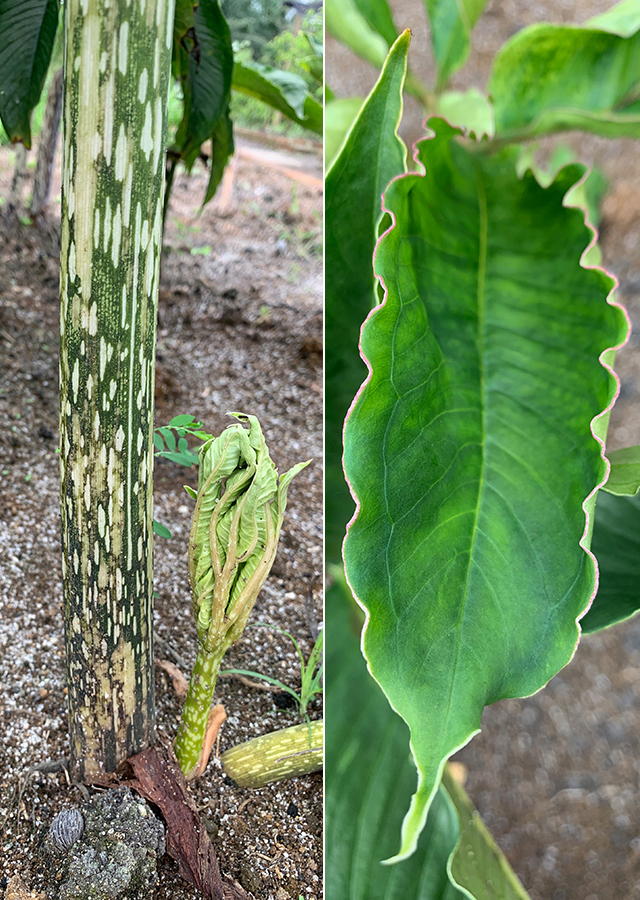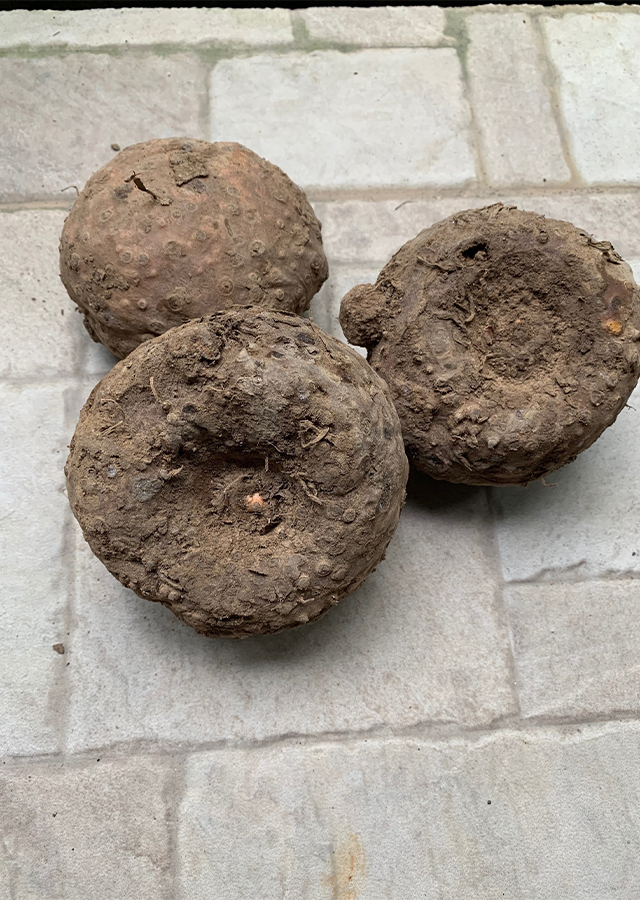Elephant Yam
Amorphophallus muelleri Blume
Araceae
Location in our garden
Principal



Synonym
Amorphophallus burmanicus Hook.f.
Amorphophallus erubescens Hett.
Amorphophallus planus Teijsm. & Binn.
Habitus
Herbaceous. A herbaceous, perennial plant producing a single leaf each year from a tuberous rootstock
Part Used
Tuber
Growing Requirements
Need Shade
Habitat
Terrestrial
Overview
It is used as food in South-East Asia, South Asia, New Guinea, Oceania, and Madagascar. Its origin and center of domestication was previously considered to be India, and widespread further west into Madagascar, and eastwards to coastal New Guinea and Oceania by the Austronesian migrations.
Vernacular Names
Ol (Bangladesh), Toyoeu (Brazilian), Bai ban mo (Chinese), Elefantenkartoffel (German), Kouniak D’annam (French), Konjac (Japanese), Choorana (Kanada), Duk Düa (Laos).
Agroecology
The plant is found growing in secondary forest, shrub forests. Prefer to temperature of 25-35 °C, with rainfall of 300-500 mm per month during in vegetative stage. It is prefers a position in half sun, the best growing in 75% shade, tolerant in 25% shade. It is grown at an altitude 100-600 m from see level. The plant prefers friable, deep loamy non alkaline soil. It requires a moist but well-drained, humus-rich, fertile soil and a position in dappled shade.
Morphology
- Stems - a stemless herb, with tuberous roots.
- Tuber- the tuber is an underground stem, depressed-globose, to about 30 cm in diameter, about 20 cm high, dark brown, with distinct annular root scars.
- Leaves - leaf is usually solitary, divided into three major segments, which is further subdivided into oval or elliptic lobes about 6 cm long.
- Flowers - small, yellowish crowded into a stout column (spadix), male above and female below. The column is crowned by a reddish-brown bladder like an appendage
- Fruits - obovoid berry crowded on the spadix, 1.5 cm diameter, two to three seeded, Maturing from green to bright red.
Cultivation
- Propagated vegetatively by planting the harvested tubers.
- Propagated generatively by seeds.
Chemical Constituents
Calcium oxalate, glukomanan (beta-Dglukosa and beta-D-mannosa), phenolic, flavonoid, amino acid.
Traditional Medicinal Uses
- Lowering cholesterol, cardiovascular health, anticoagulant and anti-inflammatory, cancer preventions, low down ageing, diabetes, detoxification, memory and concentration, boost immunity, cures piles, women health, cooling effects, good for digestion, slimming food, skin and hair care benefits.
- Tubers are used as appetizers, aphrodisiac, expectorants, irritants and anti-catarrhal and for liver complaints, tumours, inflammation, hemorrhoids, vomiting, cough, bronchitis, asthma, piles, abdominal pains, dyspepsia and acute rheumatism and for treating spleen enlargement in Indian traditional medicine.
- Tubers are used to prevent sagging belly in women and enlargement of the bladder.
- In Sri Lanka, tubers are used as carminative, restorative, stomachic, tonic, and used to cure dropsy, urinary diseases, dyspepsia, toothache, rheumatism, boils, fistula, colitis, hemorrhoids, diuretic, piles, elephantiasis and glandular swellings.
- Tubers are used for the treatment of enlarged spleen, rheumatism and tumour in India.
Part Used
Reference Sources
- Flach, M., Rumawas, F., eds. (1996). Plant Resources of South-East Asia, No. 9 - Plantsyieldingnon-seed carbohydrates. Backhuys Publishers, Leiden
- Li, H., Hetterscheid, W.L.A. (2010). Amorphophallus. In: Li, H., Guanghua, Z., Boyce, P.C., Murata, J., Hetterscheid, W.L.A., et al., eds. Araceae - Flora of China 23: 4.
- Useful Tropical Plants. (2021). Amorphophallus muelleri. http://tropical.theferns.info/viewtropical.php?id=Amorphophallus+muelleri. 10-12-2019.
